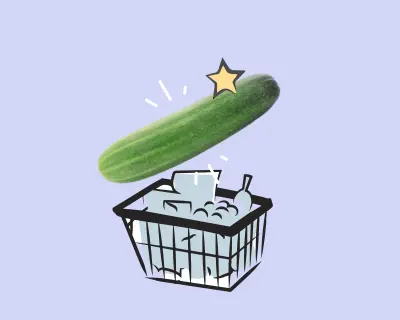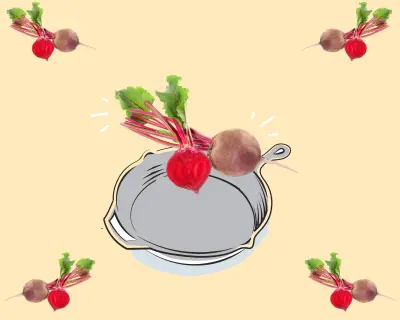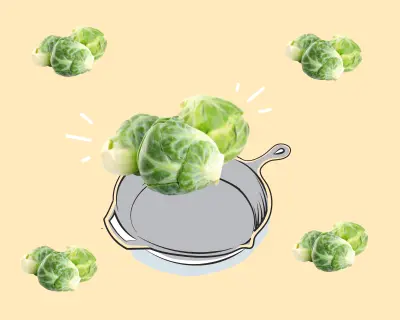Healthy vs Delicious Foods
Producer Potts 0:08
Sugar, salt and dairy. These are the three things that make everything super tasty. But if we are always adding these to our quote, unquote, healthy foods. Can we really say we eat healthy?
Dr. Sarah 0:23
Oh, yes, yes, we can. The bigger part of this question is, Is it okay to add something to your salad or to your vegetables or to your fish right at add to something that you don’t normally like, that is a really important food. Nutritionally, if you add flavoring ingredients to that food, does it negate the benefit of that food? And the answer, broadly, is no, but you still get the nutrients from that food. You’re still going to get the benefits of your food. There are some caveats, however, which is when the proportion of our diets from those flavoring ingredients starts to overwhelm the proportion of our diets from the base really like nutrient dense health promoting ingredients, right? So if we’re adding so many flavoring ingredients to our salad that it’s mostly grated cheese and bacon and salad dressing, and very, very little, you know, lettuce and vegetables, right? Like it is about understanding the relative proportion of our diets, and so with salt and sugar and fats in general, but especially saturated fats, there is a like happy medium amount to consume, above which we start to see increased risk of actually, with all of them, cardiovascular disease is the biggest risk.
Producer Potts 1:55
Oh, wow. So okay, well, can you break those down for us? Yeah,
Dr. Sarah 1:57
absolutely our targets. Okay, so with salt, we want to stay between like 2.4 grams of sodium per day. So that’s about just shy of a teaspoon of salt, or half. I should just shy of a half a teaspoon of salt, I should say, so between 2.4 grams and 4.5 grams. So about a teaspoon of salt total throughout the day is kind of right in that range, and that is not for somebody who has been put on a low sodium diet from their doctor, they would be consuming under 2.4 grams of sodium per day. For sugar, we want to stay that’s more measured as a total percent of calories. So for added sugars, that is honey, maple syrup, sugar added to your coffee, the sugar added sugar in packaged products that you might buy, we want our calories from added sugars to be no more than 10% of our total calories. So if you eat a 2000 calorie per day diet. That means sticking to 200 calories or less from added sugars. That’s still 50 grams of sugar, which is, that’s still like a that’s a lot of that’s like a quarter cup of sugar, I think, yeah, it’s still quite a lot of sugar throughout the day. And then we want to stick to 25% or less of our total calories from all sugars. So all sugars would also include, like the sugars inherent to fruit, for example. So okay, that is quite a lot of room for sugar and then saturated fat. We want to stay below 10% of total calories. So that’s fairly easy to do if you eat a, you know, vegetable forward diet. So the default mode on nutrivore is like a plant forward omnivore, so eating lots of fruits and vegetables and legumes and a handful of nuts and seeds per day, but then also eating meat and making sure to get lots of seafood. So that would sort of be the starting point. You can obviously modify that to apply nutrient principles to your preferred diet or anti diet, but that’s kind of like the you know, if we, if we’re just looking at Nutritional Sciences, and we’re trying to craft a diet that makes it the easiest to meet our nutritional needs from the foods we eat. That is, that is where we land, so lots of plant foods, but still an omnivore, so that staying below 10% of calories from saturated fat is really easy with that structure. So is staying below a teaspoon of salt per day, and so is staying below 10% of added sugars, if about 80% of our calories are coming from Whole Foods, that’s that’s really straightforward. So the answer is, absolutely. There’s actually some really interesting studies where they have, there’s this one that was done in a series of, like, college cafeterias. This was done a couple years ago, where they labeled vegetable dishes, either giving like a really, like neutral, like, name, like green beans. Uh, or a health focused name, like, you know, healthy green beans. Or a flavor focused name, like, I think it was like a Szechuan green bean with roasted garlic, you know, like, like, something describing the flavor of the dish, okay? And people served themselves. So college cafeteria diners would be mostly students, but there would be all of the others like you’d find college staff and faculty in a college cafeteria as well. So they measured how much people served themselves, and so people served themselves more compared to the neutral term, the neutral like, just green beans, the neutral name. If people, if they were given the like healthy name, healthy green beans, they served themselves less green beans than the neutral, just green beans name, and then the you know, Sichuan green beans with roasted garlic, they served themselves more than the neutral term and like, the difference between that was like, you know, 20 some odd percent, like it was, it was quite a large 28% something like that. Difference between the people who, like, got this green bean sounds delicious, versus this green bean sounds healthy, healthy. But then what they also found was that when the green beans were, like, prepared in these really tasty ways, people also ate more of them. So basically, the amount that they were measuring how much was being thrown out, like, like, the person didn’t eat them, so it was left on the plate, and the amount being thrown out was not different. So that means that the people who served themselves more of the Szechuan green beans with roasted garlic also eat more. And I don’t, I don’t think it’s. I don’t think it’s surprising to think that when you enjoy the flavor of a food, it’s you’re going to eat more of that food, more of it. Right? Apply that to ultra processed foods that are sort of addictively delicious, but we can also apply that to making our salad yummy, or adding, you know, such one seasoning and roasted garlic to our green beans.
Producer Potts 7:10
And adding sugar to our coffee, right?
Dr. Sarah 7:13
yeah. I mean, coffee is healthy up to about, you know, or health promoting up to about three cups per day. And if that’s the way you like your coffee, provided the sugar isn’t, you know, totaling more than 10% of your calories throughout the day. Like, yep, that
Producer Potts 7:28
would that’s absolutely, you said that’s 50 grams of sugar. So, like, that’s a lot of sugar. So someone could have their daily fancy Starbucks drink and still say, I’m a healthy person,
Dr. Sarah 7:41
if that’s your priority, right? If that’s so, like, for me, my favorite way to have sugar would be dessert after dinner gotcha, or maybe, you know, a nice chocolate truffle or something throughout, like after lunch or in the afternoon. And so I kind of like to save my 10% of sugar for dessert, because that’s what gives me the most joy. I also prefer my coffee unsweetened, so that makes it easy for me. So just think about, like the composition of the whole diet when you’re looking at how much of these, like flavoring, sugar, salts, dairy or just fat in general, like how much of these adding to my food to make it taste good, and how does that shift the composition of my whole diet? Does that mean that most of my calories are coming from that sugar and that fat that I’m adding to my food, or still is most of my calories coming from the food itself. So understanding that the relative proportion of how those different foods and flavoring ingredients are contributing to our whole diet is really what this question is about. It’s not that it’s good or bad to add flavoring to our food. It helps you eat healthy food. You’re still benefiting from that healthy food, but to a point right, like to a there’s there’s an amount of flavoring ingredients we can add to a food where the diet has been dominated by the flavoring ingredient and not dominated by the whole food anymore, and once we start crashing into that threshold, then the composition of the whole diet is no longer a nutrient dense, health promoting diet, Because the whole diet is just flavoring ingredients and not the foods underneath, there’s this old Simpsons episode where I think Homer goes on a diet. We don’t need to talk about that part, because it is problematic in so many different ways. But he’s eating rice cakes, and Marge says, like, it’s only 35 calories. And he’s like, hello, taste, taste, hello, that’s fair. And then she says, Oh, you can put a little something on her flavor. And he loads it up with just what i. Or cartoon meats. And it goes from being like a half inch thick rice cake to being like a six inch tall, mound of melted cheese, and, you know, deli meats and whatever seasonings. And then he pulls it, he like, pulls it out of the microwave, and he goes, like, and I think that’s like, just to me, that visual is, like, the representation probably not everything he added to his rice cake was a problem at like, a thing that we want to limit. Do you know what I mean? Like, he was probably things that were just nutrient dense and just fine, good foods to add. But it’s kind of, it’s kind of, it’s that, it’s sort of thinking about the proportion, right? So when you start adding so many things that what you’re eating is what you added, and not the base thing, right? Or that, that’s where we get into and so it’s really like no one food is going to make or break your diet. And that sort of refers to even the refined things that we might add right, the sugar and cream I might add to our coffee that’s not going to make or break your diet, that’s not going to make or break your health, but it’s rather the relative proportions of those different things in our overall diet, whether or not the overall diet is a diet that will support long term health or not, right? One that will dial up the risk versus dial down the risk. And I think it’s really important in the context of diet culture, teaching us that we have to eat that rice cake plain, right? We have to eat vegetables plain.
Dr. Sarah 11:40
we’re not allowed to enjoy food. If we’re enjoying food, we’re doing it wrong, right? Or we’re, we’re, it doesn’t count. That’s kind of like what diet culture has taught us, and I think that’s a really horrible message, because we are, we are, we’re creatures of like, pleasure seeking creatures, right? Like, food is a major source of tasty, pleasant feelings of joy. And to deny us the joy of food is to deny a basic human experience, I think, a basic human right, and so, so I think it’s really important in this, like, bigger conversation of like you have permission to make vegetables and to prepare them in a way that tastes good to you. You get to make the Szechuan green beans with roasted garlic, if that’s the way you like them. If you like them plain, eat them plain like but you get to make them in a way that tastes good to you. And that doesn’t negate the benefits of those green beans. We just want to be cognizant that we’re still eating a green bean dish and not a I don’t know what you would add onto green beans that would make it not a green bean dish anymore. yes, with a little like you want. You want the dish to be a green bean dish, not the green beans being like sprinkled condiment on top, if that makes sense.







